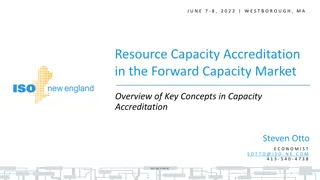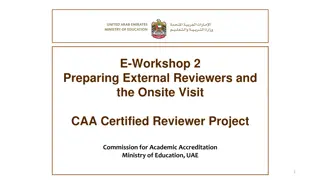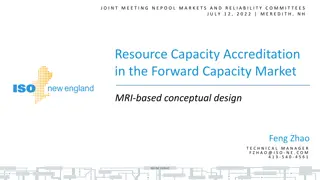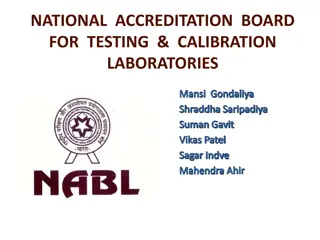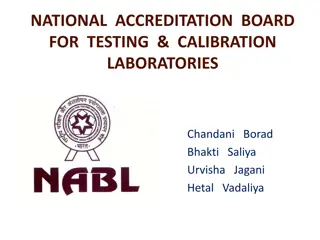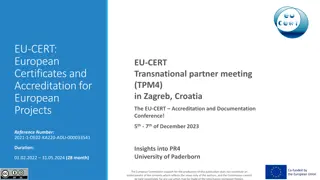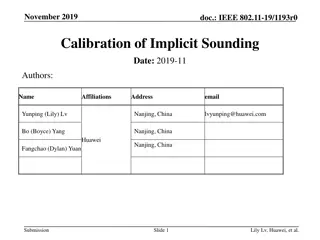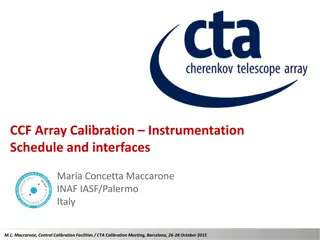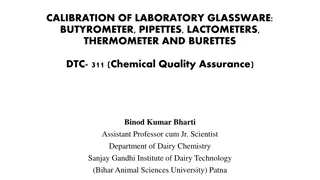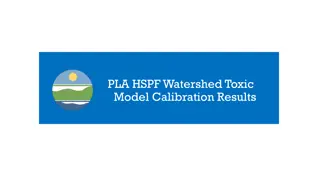Benefits of NABL Accreditation in Testing and Calibration Laboratories
NABL, the National Accreditation Board for Testing and Calibration Laboratories, grants accreditation in various areas like science, engineering, and medical testing. Accreditation ensures credibility, proficiency testing, technical competence, and international recognition for accredited laboratories. Customers benefit from increased confidence in reports, access to accredited laboratories, savings in time and money, and satisfaction of the staff. Moreover, laboratories with NABL accreditation can issue test reports bearing the accreditation symbol, indicating their technical competence and commitment to quality.
Download Presentation

Please find below an Image/Link to download the presentation.
The content on the website is provided AS IS for your information and personal use only. It may not be sold, licensed, or shared on other websites without obtaining consent from the author.If you encounter any issues during the download, it is possible that the publisher has removed the file from their server.
You are allowed to download the files provided on this website for personal or commercial use, subject to the condition that they are used lawfully. All files are the property of their respective owners.
The content on the website is provided AS IS for your information and personal use only. It may not be sold, licensed, or shared on other websites without obtaining consent from the author.
E N D
Presentation Transcript
NABL National Accreditation Board for Testing and calibration Laboratories Principles and Procedures
SCOPE NABL Grants accreditation in almost all areas of science, engineering and medical testing. The international standards followed are : ISO 15189:2007 (for Medical Testing) , ISO/IEC 17025:2005 (for Testing, calibration) Int. electro technical comission ISO 17043:2010 [for PT (profiency testing )providers]
Certification Vs Accreditation Certification Accreditation Certification is a comprehensive evaluation of a process, system, product, event, or skill typically measured against some existing norm or standard. Certification does not make any statement about the technical competence of the laboratory. Example ISO 9001:2005 Certification Accreditation is the formal declaration by a neutral third party that the certification program is administered in a way that meets the relevant norms or standards of certification program Uses criteria specifically developed to determine technical competence of the laboratory. This is an independent evaluation of laboratory s technical competence Accreditation-Example ISO 17025
BENEFITS OF NABL Customers can search laboratories Customers can search and identify the laboratories accredited by NABL for their specific requirements from the NABL website or Directory of accredited laboratories. Increased confidence in reports : Why? Bcos the labs are required to participate in proficiency testing which is again demonstration of competence. So, there is increased confidence in the reports released by the laboratory. (ex. PATHOLOGY LABS) The customers get services by credential staff. Savings in terms of time and money as it reduces or eliminates the need of re-testing.
Use of NABL symbol The accredited laboratories can issue test reports bearing the accreditation body s symbol or endorsement, as an indication of accreditation. International Recognition Lab accreditation is highly regarded both nationally and internationally as an indicator of technical competence Satisfaction of the staff The staff in an accredited laboratory is satisfied as it provides for continuous learning ,good working environment, leadership.
HELPS in Continuous improvement Accreditation to a laboratory stimulates continuous improvement .It enables the laboratory in demonstrating commitment to quality test reports. Systematic Control of lab work Better control of laboratory operations and feedback to laboratories Benchmark with best laboratories It also provides opportunity to the laboratory to benchmark with the best
Rise in business There is marked increase in the business of the labs as the accredited status can be seen by the clients on NABL website. it raises community confidence in the services provided by the laboratory. Finally, Accreditation provides an objective system of empanelment by insurance and other third parties.
10 Step Procedure for NABL Awareness Training Quality Policy & Objectives Finalization Gap Analysis Documentation / Process Design Documentation / Process Implementation Internal Audit Management Review Meeting Shadow Audit Corrective Preventive Actions Final Certification Audit
STEPS Step 1:-Awareness Training Separate training sessions for top management, middle management and junior level management. Creates a motivating environment throughout the organization for ISO 17025 implementation. Step 2:-Quality Policy & Objectives Work shop with top management on development of quality policy. Work shop with top management and middle level functional management on development of quality objectives.
Steps Step 3:-Gap Analysis Understanding of all the operations of the organization. Development of process map for the activities of the organization. Comparing existing operations with requirements of ISO 17025:2005 standard. Step 4:-Documentation / Process Design Quality Manual Functional Procedures Work Instructions System Procedures Formats
STEPS Step 5:-Documentation / Process Implementation Work shop on process / document implementation as per ISO 17025 requirements. Departmental / Individual assistance in implementing the new processes / documents. Step 6:-Internal Audit Internal Audit Training & Examination (Optional). Successful employees / carry out internal audit of the organization covering all the departments and operations. Suggest corrective and preventive actions for improvements in each of the audited departments.
Steps Step 7:-Management Review Meeting Quality Policy & Objectives Results of internal audit Results of supplier evaluation Results of customer complaints Results of customer feedback etc. Step 8:-Shadow Audit A replica of final certification audit. Finds degree of compliance with ISO 17025 standard. Gives an idea to the employees about the conduct of the final certification audit.
Steps Step 9:-Corrective Preventive Actions On the basis of shadow audit conducted in the last step, all the non-conformities (NC) will be assigned corrective and preventive actions. A check will ensure that all the NCs are closed and the organization is ready for the final certification audit. Step 10:-Final Certification Audit Upon completion of various stages of accreditation audit, the audit, your organization will be awarded accreditation.
Getting Ready for Accreditation 1. Contact NABL Secretariat with a request for procuring relevant NABL documents (NABL Contact address and the list of NABL documents given in Annexure-3 and 1, respectively). 2. Get fully acquainted with all relevant documents and understand the assessment Procedure and methodology of making an application. 3. Train a person on Quality Management System and Internal Audit (4-day residential training courses conducted by NABL. Contact NABL Secretariat for details). 4. Prepare QUALITY MANUAL as per ISO 15189 standards. 5. Prepare Standard Operating Procedure for each investigation carried out in the laboratory. 6. Ensure effective environmental conditions (temperature, humidity, storage placement, etc.).
7. Ensure calibration of instruments / equipment. Only NABL ACCREDITED CALIBRATION LABORATORIES are authorized to provide calibration. NABL website gives the names of NABL accredited calibration laboratories in the various fields of Accreditation. 8. Impart training on the key elements of documentation, such as document format, authorization of document, issue and withdrawal procedures, document review and change, etc. Each document should have ID No., name of controlling authority, period of retention, etc. 9. Ascertain the status of the existing quality system and technical competence with regard to NABL standards and address the question Is the system documented and effective OR does it need modification? . 10. Remember Quality Manual is a policy document, which has to be supplemented by a set of other next level documents. Therefore ensure that these documents are well prepared. 11. Ensure proper implementation of all aspects that have been documented in the Quality Manual and other documents.
12. Incorporate Internal Quality Control (IQC) practice while patients samples are analysed. 13. Document IQC data as well as uncertainty of measurements. Maintain Levy Jennings charts. 14. Participate in External Quality Assessment Schemes (EQAS). If this is not available for certain analytes, participate in inter-laboratory comparison through exchange of samples with NABL accredited laboratories. 15. Document corrective actions on IQC / EQA 16. Conduct Internal Audit and Management Review. 17. Apply to NABL along with appropriate fee.


